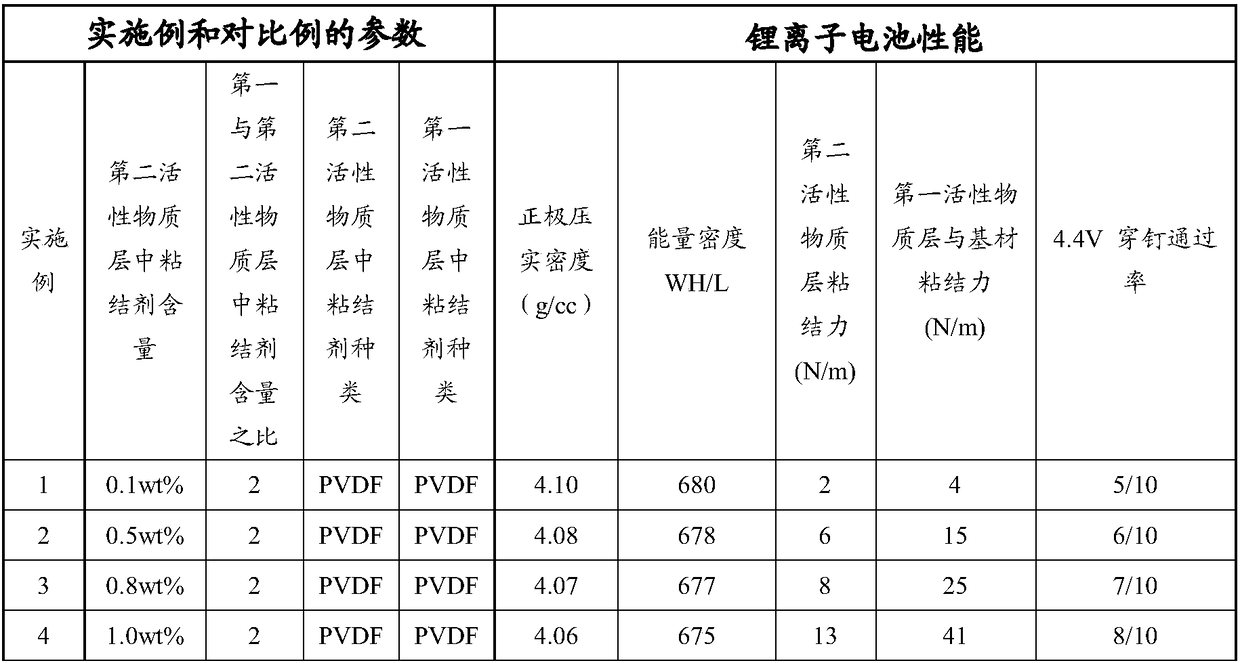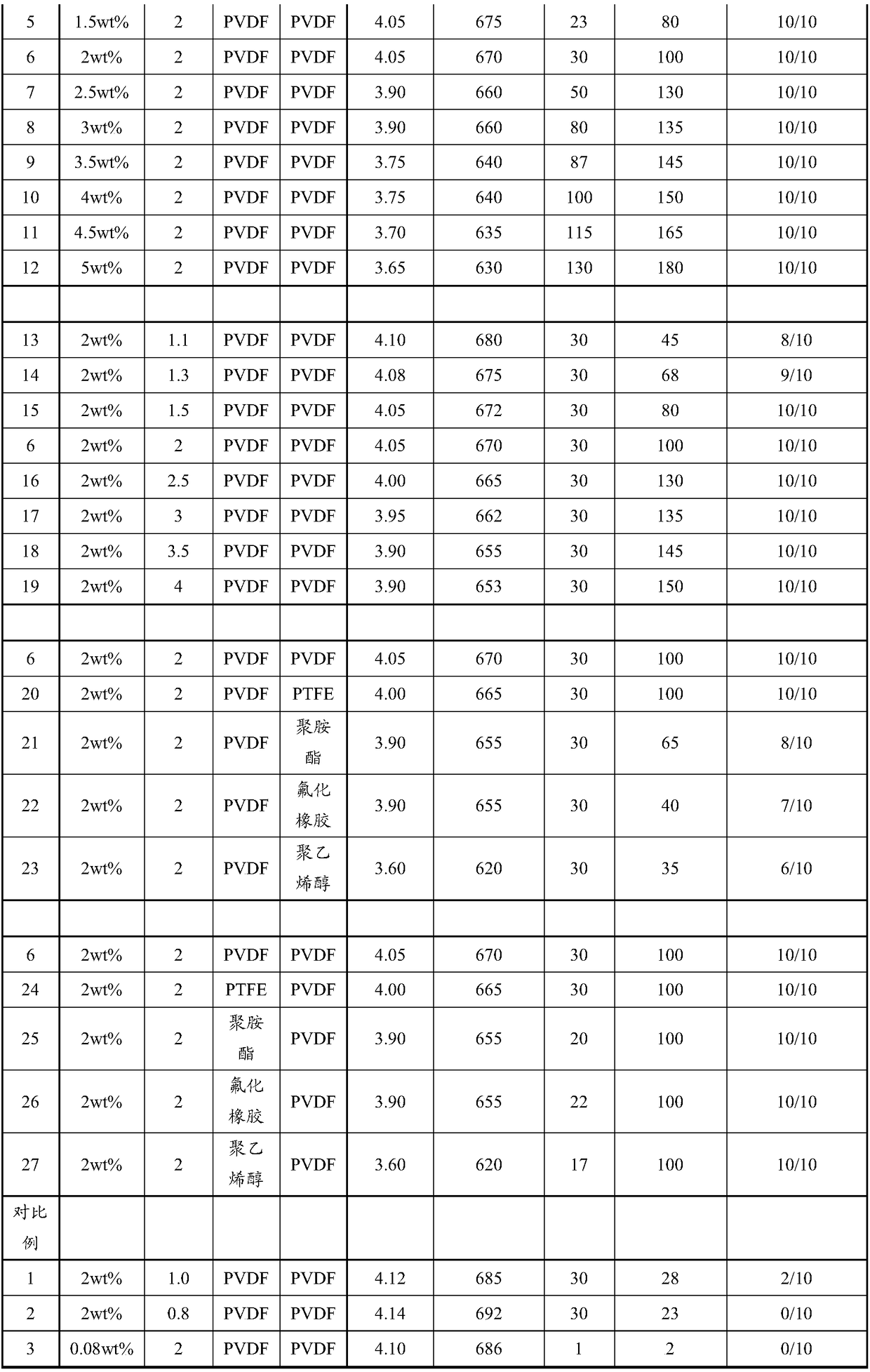A positive electrode plate and a lithium ion battery
A technology for lithium-ion batteries and positive pole pieces, which is applied in the manufacture of battery electrodes, secondary batteries, and electrolyte batteries. It can solve the problems of energy density and safety performance, reduce short-circuit heat generation, improve safety performance, The effect of improving the pass rate
- Summary
- Abstract
- Description
- Claims
- Application Information
AI Technical Summary
Problems solved by technology
Method used
Image
Examples
preparation example Construction
[0030] The following describes the preparation of lithium-ion batteries. The preparation method includes: preparation of positive pole pieces, preparation of negative pole pieces, preparation of electrolyte, preparation of separators and preparation of lithium-ion batteries, specifically including the following steps:
[0031] Positive electrode sheet preparation: (1) such as lithium cobalt oxide (LiCoO 2 ), nickel cobalt manganese, nickel cobalt lithium aluminate, lithium iron phosphate (LiFePO 4 ), preferably lithium cobaltate (LiCoO 2 ) positive electrode active material, conductive agent carbon black (Super P) are mixed with binder polyvinylidene fluoride (binder content can be adjusted in the range of 0.1-5wt%) according to the weight ratio of 90-98:1-2 , add N-methylpyrrolidone (NMP), and stir under the action of a vacuum mixer until the system is dispersed into a uniform slurry to obtain the upper positive electrode slurry; (2) such as lithium cobaltate (LiCoO 2 ), ni...
Embodiment 1
[0039] (1) Preparation of positive pole piece
[0040] Mix the positive electrode active material lithium cobaltate, the conductive agent Super P, and the binder polyvinylidene fluoride (PVDF) according to the weight ratio of 97.6:2.3:0.1, add N-methylpyrrolidone (NMP), under the action of a vacuum mixer Stir until the system becomes a uniform slurry to obtain the upper positive electrode slurry;
[0041] Mix the positive electrode active material nickel-cobalt lithium manganese oxide, the conductive agent Super P, and the binder polyvinylidene fluoride (PVDF) according to the weight ratio of 96.6:3.2:0.2, add N-methylpyrrolidone (NMP), and mix in a vacuum mixer Stir under action until the system forms a uniform slurry to obtain the lower positive electrode slurry;
[0042] Firstly, the lower positive electrode slurry was evenly coated on the positive electrode current collector aluminum foil to prepare the first active material layer; the first active material layer was drie...
Embodiment 2
[0052] The preparation method of the positive pole piece, the negative pole piece, the electrolyte, the separator and the lithium ion battery are all the same as in Example 1, the difference is that, in the preparation process of the positive pole piece, while maintaining the upper and lower positive electrode slurry When the content of the conductive agent SuperP is constant, the content of the binder polyvinylidene fluoride (PVDF) in the upper positive electrode slurry (corresponding to the second active material layer) is adjusted to 0.5wt%, and the lower positive electrode slurry is adjusted The content of binder polyvinylidene fluoride (PVDF) in (corresponding to the first active material layer) is such that the content of polyvinylidene fluoride (PVDF) in the positive electrode slurry of the lower layer is the same as that of polyvinylidene fluoride in the positive electrode slurry of the upper layer. The content ratio of (PVDF) was 2.
PUM
 Login to View More
Login to View More Abstract
Description
Claims
Application Information
 Login to View More
Login to View More - R&D
- Intellectual Property
- Life Sciences
- Materials
- Tech Scout
- Unparalleled Data Quality
- Higher Quality Content
- 60% Fewer Hallucinations
Browse by: Latest US Patents, China's latest patents, Technical Efficacy Thesaurus, Application Domain, Technology Topic, Popular Technical Reports.
© 2025 PatSnap. All rights reserved.Legal|Privacy policy|Modern Slavery Act Transparency Statement|Sitemap|About US| Contact US: help@patsnap.com


